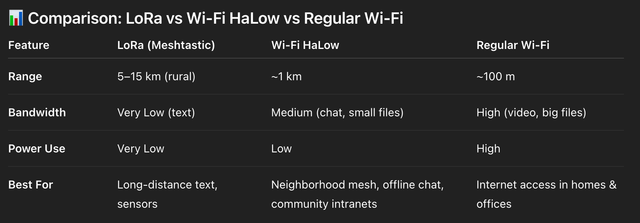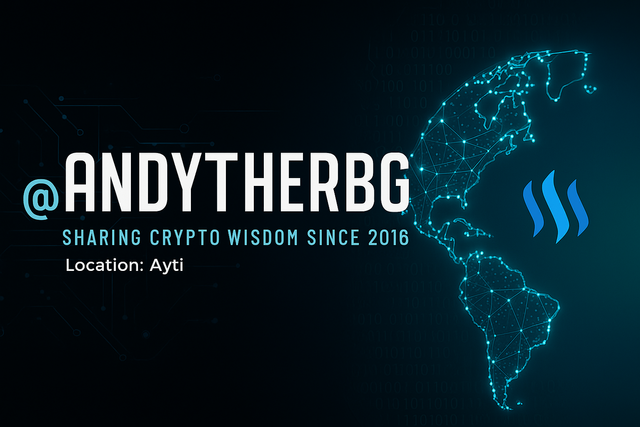🌐 Wi-Fi HaLow: The Future of Mesh Communication for Poor Countries
When we think about connectivity in poor or disaster-stricken countries, the first challenge is always the same:
📡 How do you build a communication system that works when infrastructure is weak, expensive, or completely down?
This is where Wi-Fi HaLow (IEEE 802.11ah) enters the picture. It combines the long-range power of sub-1 GHz frequencies with the low-power efficiency that rural or off-grid communities desperately need. Even more exciting, it could supercharge mesh communication apps like Meshtastic, BitChat, and Briar.
🔗 Why Wi-Fi HaLow is Perfect for Mesh Networks
Unlike regular Wi-Fi (2.4/5 GHz), Wi-Fi HaLow offers:
Long Range: up to 1 km outdoors, penetrating walls, forests, and even hilly terrain.
Low Power: runs on batteries or solar for weeks/months.
Flexible Topology: supports point-to-point, peer-to-peer, and point-to-multipoint connections.
This makes it a bridge technology between short-range Wi-Fi and ultra-long-range LoRa.
🛠️ Strengthening Existing Mesh Projects
🔹 Meshtastic (LoRa-based)
Current strength: Ultra-long range, but very low bandwidth (text only).
With HaLow: Communities could combine LoRa for long-haul + HaLow for faster local neighborhood links.
🔹 BitChat
Needs higher bandwidth for local chats and file sharing.
HaLow adds reliable neighborhood-scale coverage for offline chat networks.
🔹 Briar
Works peer-to-peer via Bluetooth/Wi-Fi Direct.
With HaLow, Briar could jump from a few meters to hundreds of meters or entire villages, keeping activists, communities, and friends connected securely.

👉 As you can see, HaLow fills the gap: more useful than LoRa for daily communication, but more affordable and resilient than regular Wi-Fi.
🌍 Why This Matters
Disaster Recovery: After earthquakes or hurricanes, HaLow mesh networks could restore communication when towers fail.
Community Intranets: Villages could share news, education resources, and local markets offline.
Education & Health: Schools and clinics can connect devices over larger areas with solar-powered HaLow hotspots.
Activism & Privacy: Apps like Briar become unstoppable when messages can hop across whole neighborhoods without the internet.
⚠️ Challenges Ahead
HaLow devices are not yet mainstream, meaning hardware costs could be higher at first.
Developers need to add driver support for apps like Meshtastic or Briar to use HaLow radios.
Governments must open spectrum and support community networks.
✅ Conclusion
Wi-Fi HaLow isn’t a silver bullet, but it could be the missing link for building affordable, resilient, community-driven communication networks. By strengthening projects like Meshtastic, BitChat, and Briar, HaLow can help poor countries leapfrog traditional infrastructure and stay connected — even when the world goes offline.

Upvoted! Thank you for supporting witness @jswit.